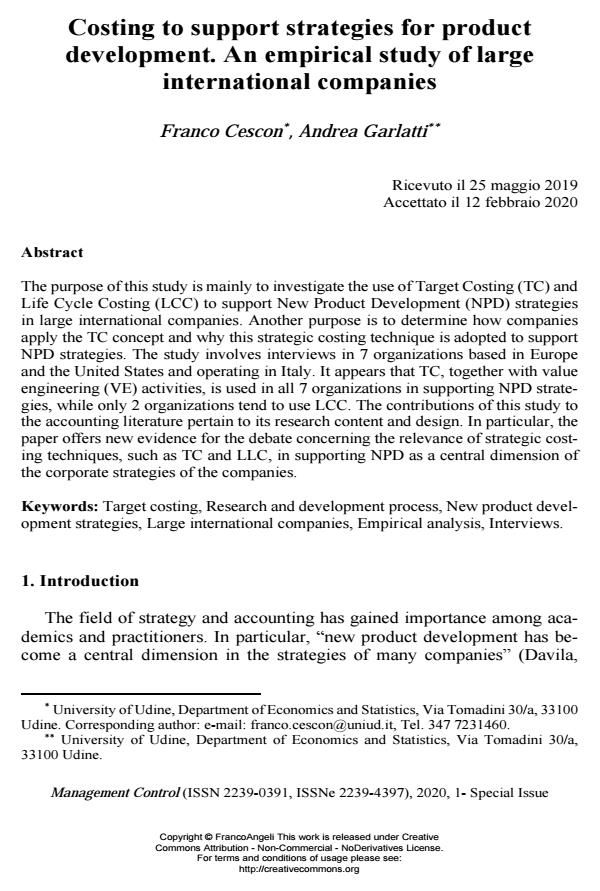Costing to support strategies for product development. An empirical study of large international companies
Journal title MANAGEMENT CONTROL
Author/s Franco Cescon, Andrea Garlatti
Publishing Year 2020 Issue 2020/Suppl. 1
Language English Pages 23 P. 127-149 File size 213 KB
DOI 10.3280/MACO2020-001-S1008
DOI is like a bar code for intellectual property: to have more infomation
click here

FrancoAngeli is member of Publishers International Linking Association, Inc (PILA), a not-for-profit association which run the CrossRef service enabling links to and from online scholarly content.
The purpose of this study is mainly to investigate the use of Target Costing (TC) and Life Cycle Costing (LCC) to support New Product Development (NPD) strate-gies in large international companies. Another purpose is to determine how com-panies apply the TC concept and why this strategic costing technique is adopted to support NPD strategies. The study involves interviews in 7 organizations based in Europe and the United States and operating in Italy. It appears that TC, together with value engineering (VE) activities, is used in all 7 organizations in supporting NPD strategies, while only 2 organizations tend to use LCC. The contributions of this study to the accounting literature pertain to its research content and design. In particular, the paper offers new evidence for the debate concerning the relevance of strategic costing techniques, such as TC and LLC, in supporting NPD as a cen-tral dimension of the corporate strategies of the companies.
Keywords: Target costing, Research and development process, New product development strategies, Large international companies, Empirical analysis, Inter-views.
- Life cycle costing. Problematiche e soluzioni metodologiche e organizzative nella sua implementazione per la sostenibilità ambientale Marco Vacca, in MANAGEMENT CONTROL 2/2024 pp.141
DOI: 10.3280/MACO2024-002007
Franco Cescon, Andrea Garlatti, Costing to support strategies for product development. An empirical study of large international companies in "MANAGEMENT CONTROL" Suppl. 1/2020, pp 127-149, DOI: 10.3280/MACO2020-001-S1008